Plant one to boost property values, lower energy costs—and leave a lasting legacy
1. Shady Welcome
Owning a house means putting down roots, and nothing underscores that notion like planting a large tree whose leafy embrace will shade your home and yard. We're talking about oaks, elms, maples, beeches—trees that can live for a century and whose names conjure small-town streetscapes and backyard picnics. Such a tree is an investment in the future: It may go in as a twig, but as you watch it grow, its canopy spreading and its trunk thickening as it rises toward a full height of 50 feet or more, it will start to feel like a member of the family.
There are practical reasons to put in one of these trees, too. Their deeper roots reduce the likelihood of buckling pavement, and their strong branches are less prone than spindlier specimens' to break under stress from wind or snow. Properly placed, they can keep a home cooler in summer and warmer in winter, taking as much as 25 percent off utility bills. Plus, when it comes to curb appeal, a mature shade tree can boost property values by as much as 20 percent.
We've narrowed the choices down to six species, all beloved for their looks, longevity, and low maintenance. And spring is an ideal time to plant. The key to success? Putting the right type of tree in the right spot, where it can spread out unimpeded. Read on for our guide to selecting, planting, and caring for a shade tree that will grow straight and tall—and enrich the landscape for generations to come.
2. Anatomy of a Shade Tree
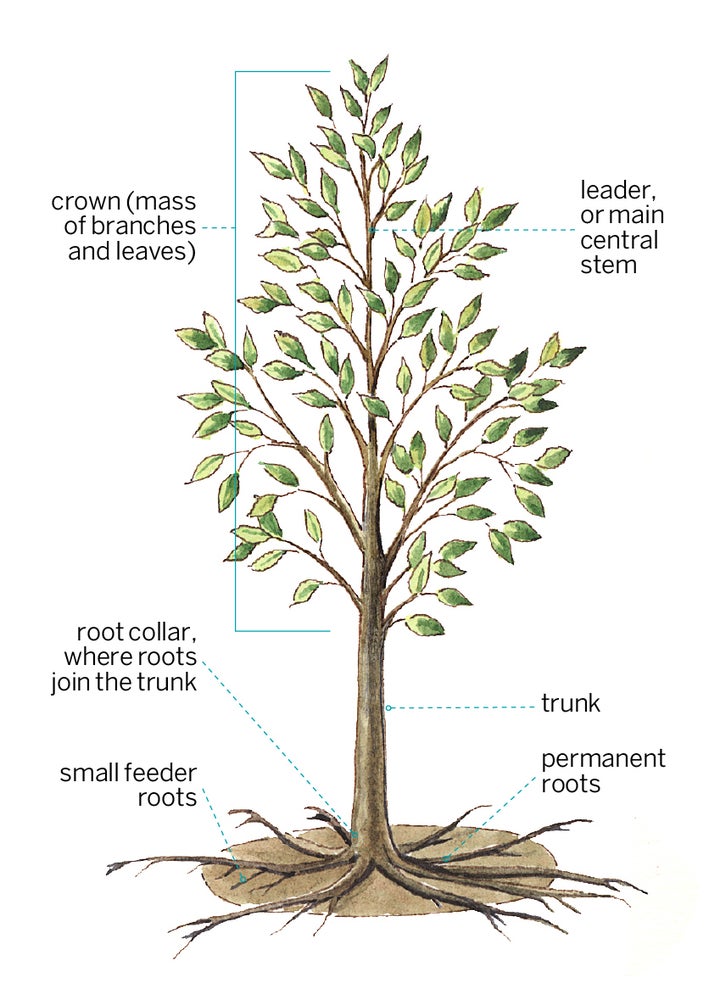
Permanent roots anchor a tree to the ground, while temporary feeder roots carry water and nutrients to limbs, branches, and leaves. At maturity, a well-shaped tree has a balanced canopy and a single strong leader.
3. Shade Tree Vitals
How much do they cost?A year-old "whip" with no branches starts at $10; a 2-year-old pot-grown tree goes for $20 and up. A field-grown tree with a 2-inch-diameter trunk can range from $200 to $1,000.
When to plant?In general, trees are best planted in spring or early fall so that strong roots develop before extreme weather sets in. Plant bare-root trees in early spring only.
DIY or Hire a pro?It's easy to plant a 55-pound potted tree. But one weighing 300 pounds? Call in a pro, as installation is usually included for trees with a trunk diameter of over 2 inches.
How much care?Newly planted trees need supplemental watering and pruning for the first three years, then only as needed.
How long do they live?Absent disease or damage, often 100-plus years.
4. Buying Basics: Potted
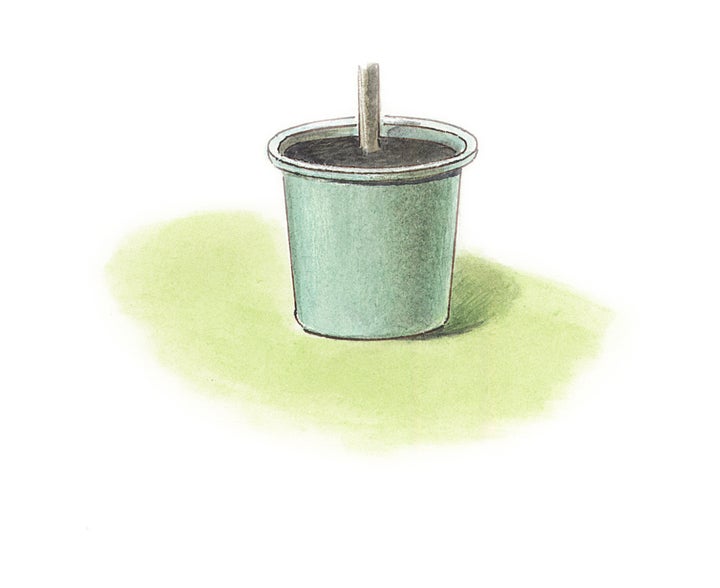
For convenience, most folks buy three- to five-year-old trees sold in 15-gallon pots at nurseries or home centers. To inspect one, gently slip the tree from the pot; a thick, solid mass of circling roots is a bad sign. And if the tree's root collar is buried, don't buy it.
5. Buying Basics: Bare Root
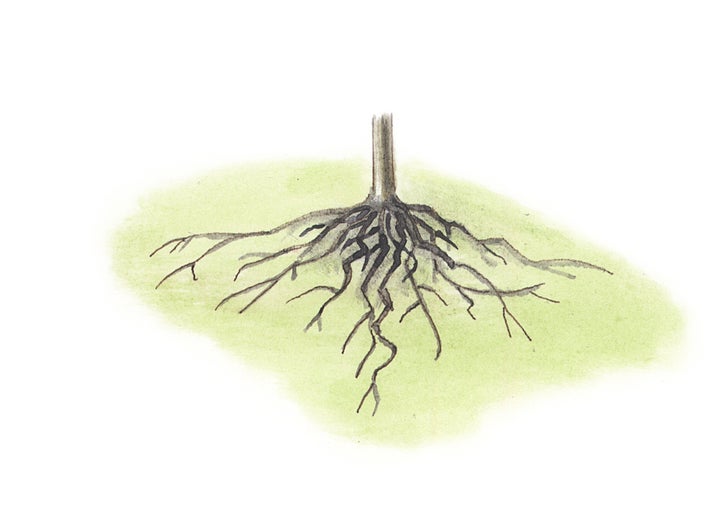
Field-grown, dug up while dormant at about 1 year old, then shipped, small bare-root trees can be a money-saving option. Look for multiple small, fibrous roots that are moist but not moldy. Plant within 72 hours or keep in a bucket of water until ready to plant.
6. Buying Basics: Ball and Burlap
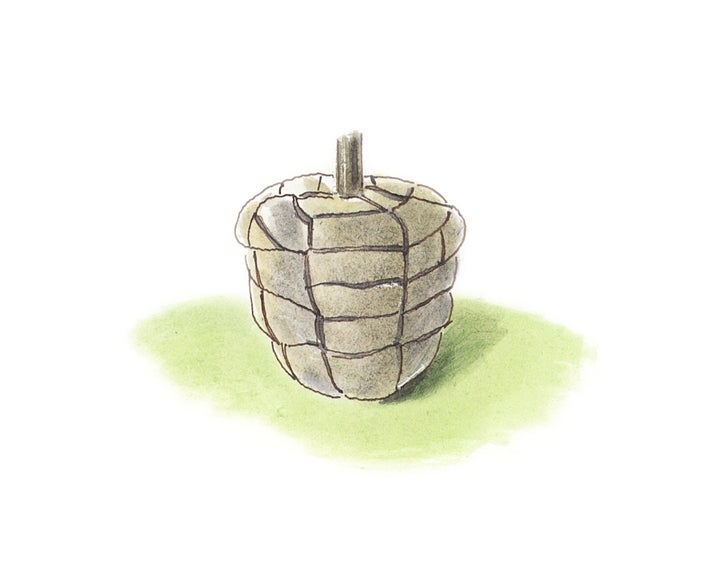
Mature, field-grown trees are dug up with soil intact, then wrapped with burlap and sold at nurseries. Check for a strong leader and a firm root ball; if the burlap is torn, roots might be broken. The root ball should be 10 to 12 times the caliper (trunk diameter), measured 6 inches above the root collar.
7. Plant It Right
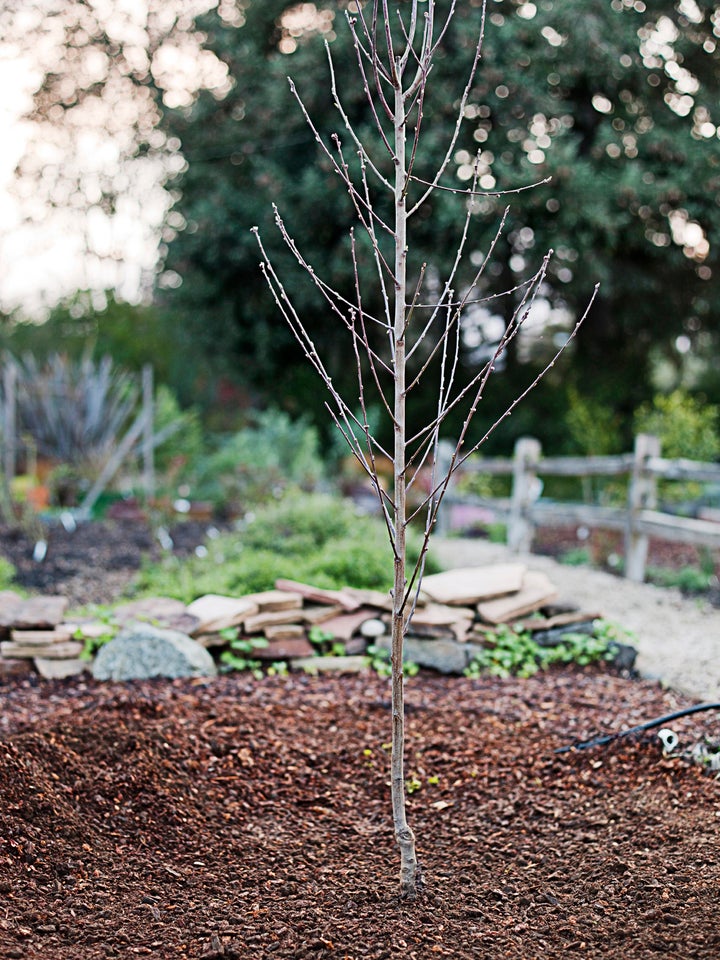
Roots spread outward, so a wide, shallow hole that allows the root collar to sit 1 to 3 inches above the soil is best.
Potted trees: Dig a hole with sides that flare outward, three times the width of the container. Carefully slide the tree from the pot. Prune any circling roots with four vertical slices along the sides of the root ball. Add soil, keeping the root collar above the hole, and water.
Bare-root trees: Soak overnight, then clip any damaged roots. Dig a hole 3 feet wide and 1 foot deep, mounding soil in the center so that the root collar sits above grade. Flare roots over the mound and fill in with soil. Water once to settle the soil, and water again.
Ball-and-burlap trees: Dig a hole as deep as the root ball and five times wider to encourage rapid rooting. Move the tree into place. Add soil so that the root collar is above the top of the hole. Remove any wire, twine, and burlap. Fill with soil and water thoroughly.
8. Give It Room to Grow
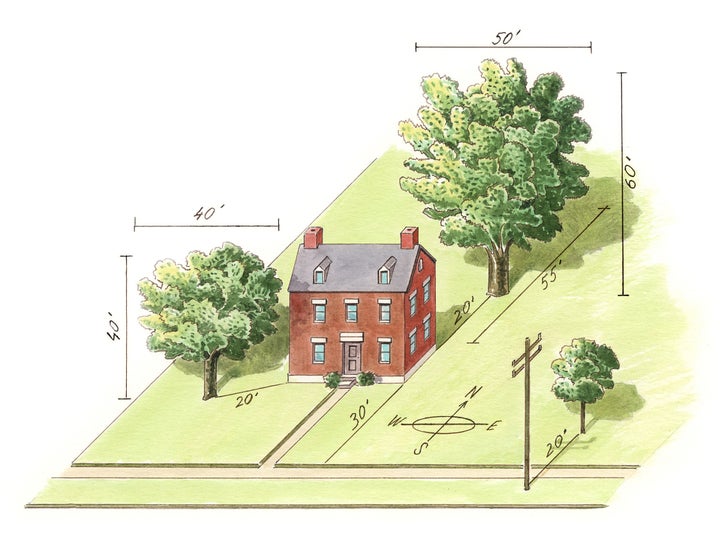
Too big a tree in too little space is an all too common problem. A tree that's oversize for its site can damage a house's roof or foundation, impinge on power lines, and encroach on a neighboring property. Carefully consider a specimen's size at maturity—and believe that it will grow that big. A typical 55-foot-deep backyard can accommodate one large shade tree, planted at least 20 feet (or about half the width of its mature canopy) from the house and 5 feet from the sidewalk. In a typical front or side yard, about 30 feet deep, select a medium-size tree no taller than 40 feet and plant it at least 20 feet from a house's foundation. Around power lines, stick to a small tree, under 25 feet tall.
9. Time to Say Good-Bye?
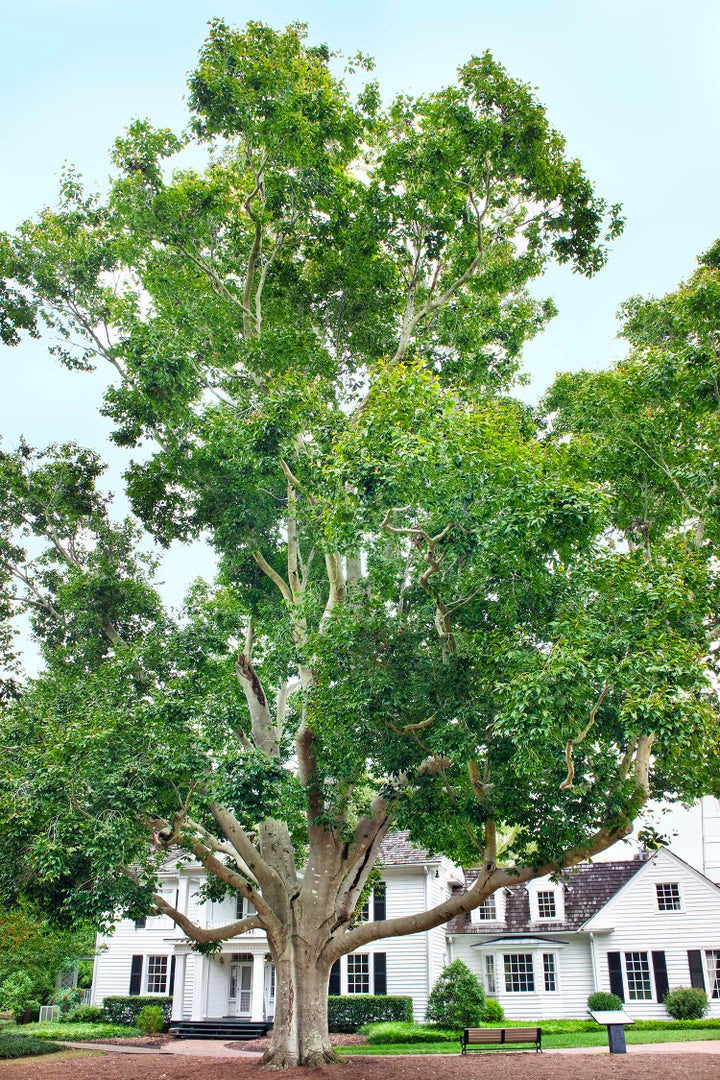
Cutting down a 75-year-old tree—even if it's damaged, diseased, or causing havoc with paving—is a tough call. Before deciding, consult an arborist. A heavy limb that's leaning precariously may be saved with cables or bracing; one with dead and broken branches might be fine with a good pruning. An arborist can assess whether a diseased tree is treatable or if changes in leaf color, development, or branch-tip dieback indicate that it has to go.
For more tips and help picking a tree type, visit thisoldhouse.com
